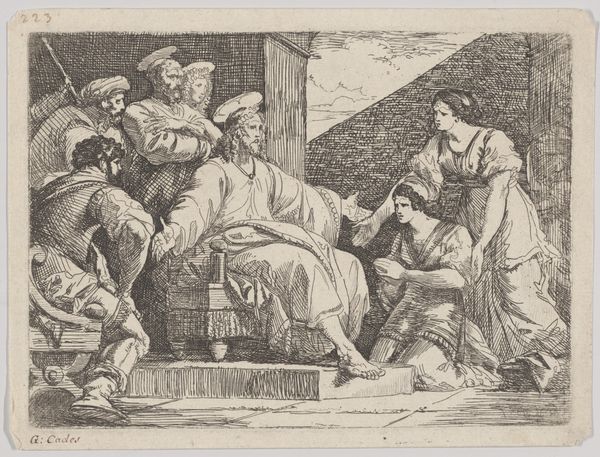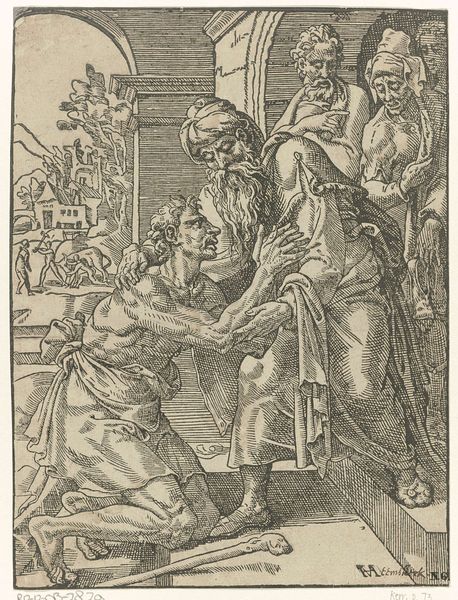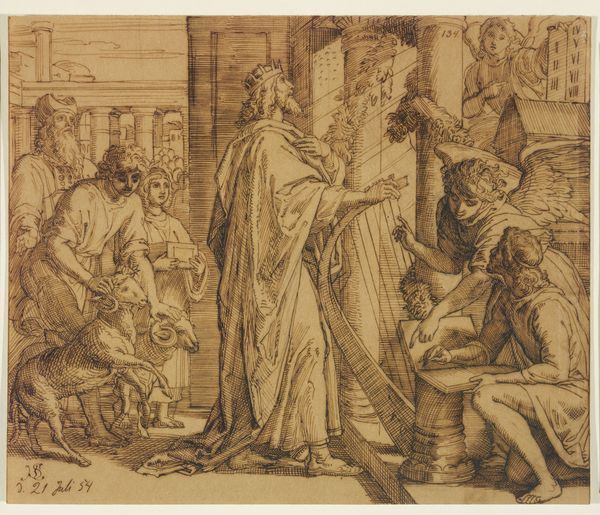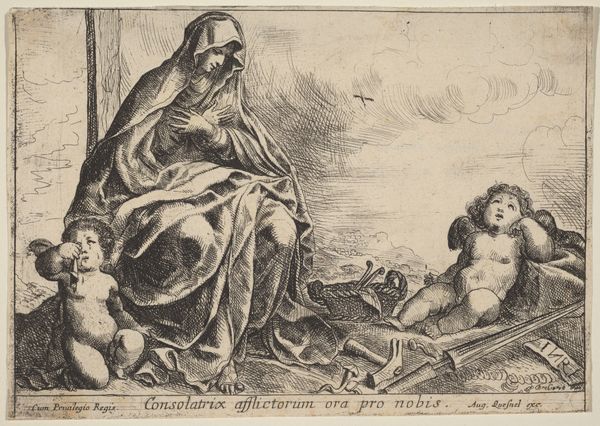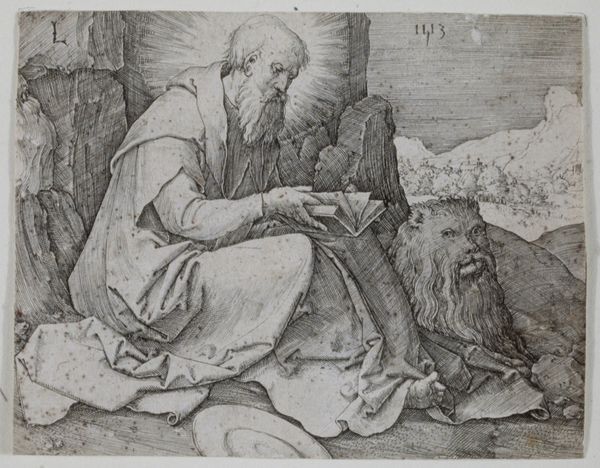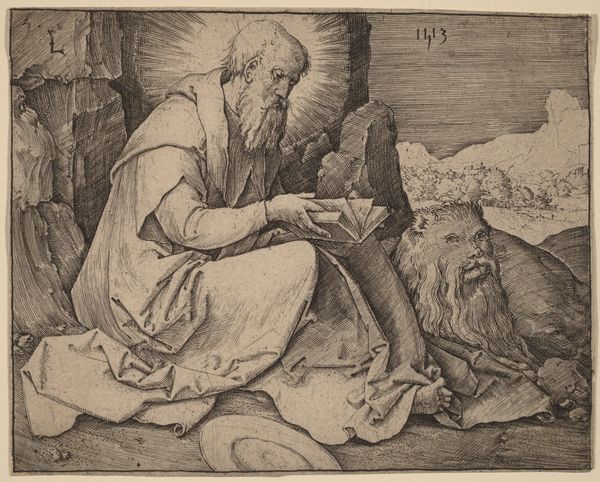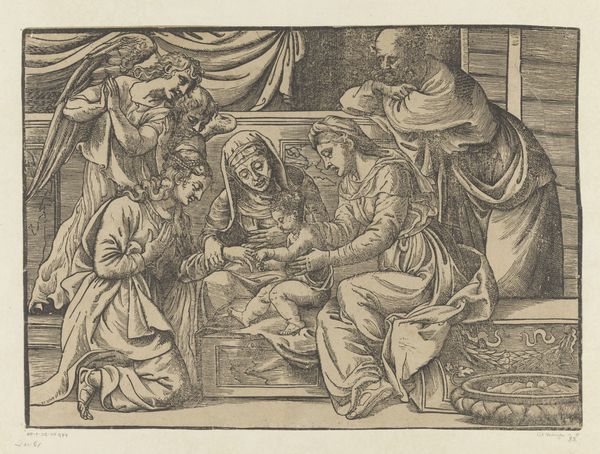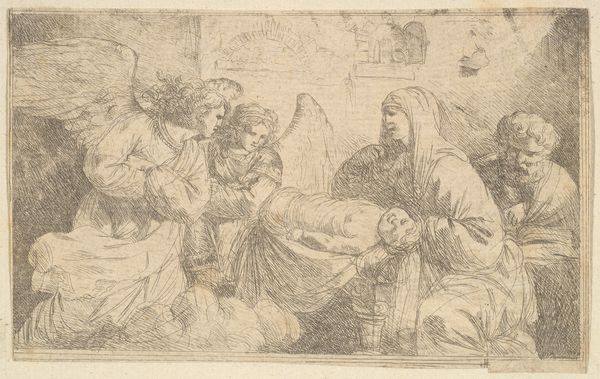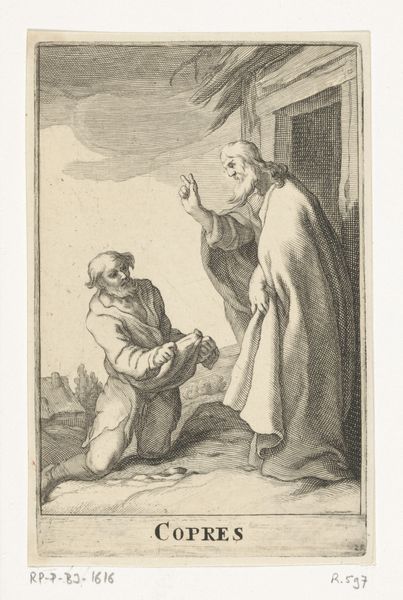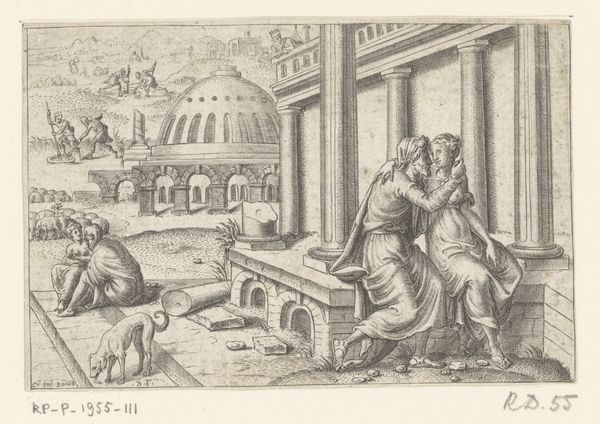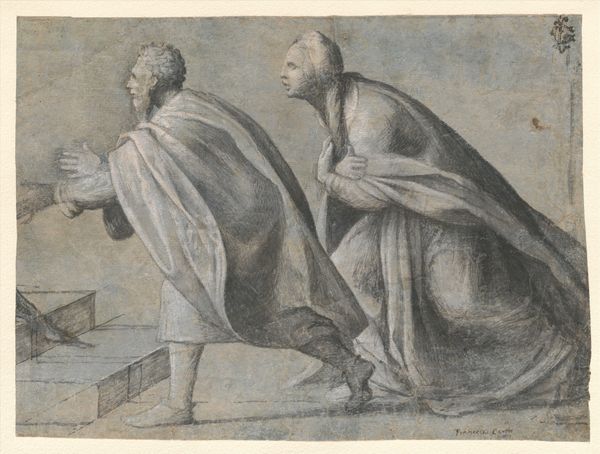
drawing, paper, ink
#
drawing
#
figuration
#
paper
#
ink
#
romanticism
#
history-painting
Copyright: Public Domain
Julius Schnorr von Carolsfeld made this print, "Jeremias Klage," using etching – a printmaking process that relies on acid to bite lines into a metal plate. The plate is inked, and then printed onto paper. Etching is indirectly additive. The artist sketches a design onto a prepared plate; then uses needles to expose the metal. When dipped in acid, the exposed lines are eaten away. The longer the acid bath, the deeper the lines become. The printing process is relatively labor intensive. After the acid bath, the plate is cleaned and inked, and then rubbed to ensure the ink settles into the recessed lines. It is then pressed onto paper to transfer the image. The cross-hatching technique seen here gives volume and tone to the image, and this is achieved in the original plate through the skilled use of needles. It creates a visual language that's distinct from drawing or painting, yet shares qualities with both. Considering the time and skill involved in etching, we can appreciate the depth of expression achieved in this image. The tonal qualities and textures elevate the work beyond a mere reproduction, asserting its artistic merit.
Comments
No comments
Be the first to comment and join the conversation on the ultimate creative platform.
